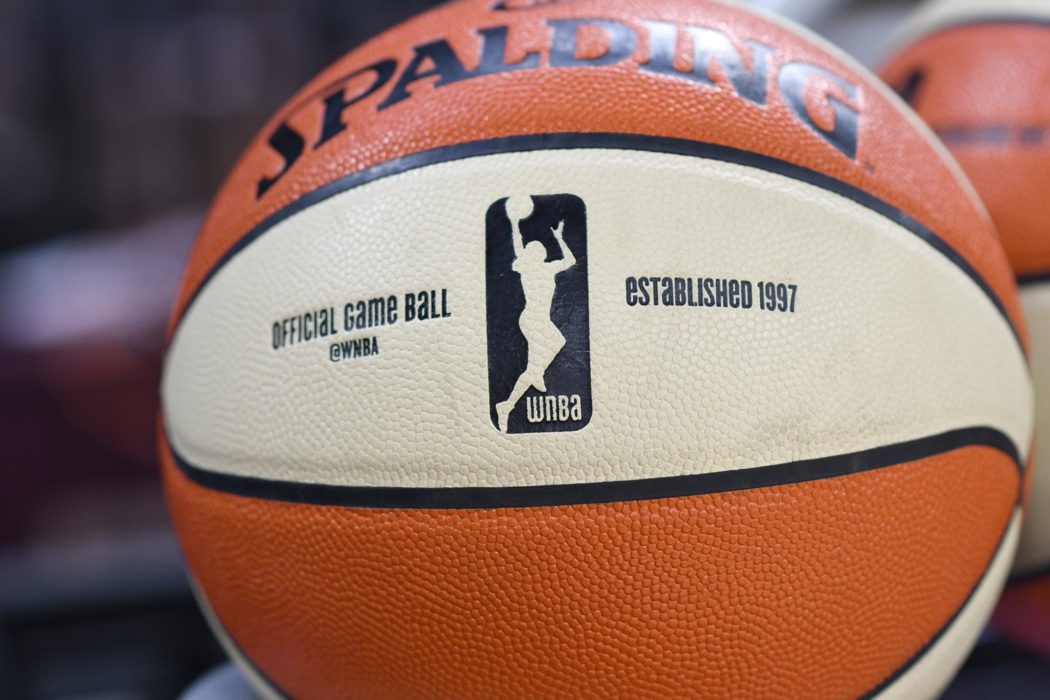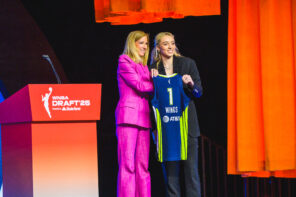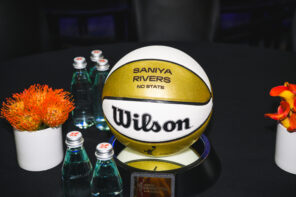Everyone that is within the WNBA family wants to see the league live up to the potential that we know it has. From players to coaches to fans to media to those that work in the WNBA’s plush offices in New York City, a thriving W is better for the sporting landscape at large.
But we are also not naïve. We understand that, at times, it can appear as if the biggest obstacle in the way of the WNBA’s growth is the WNBA itself.
Take, for example, the Howard Megdal report on the New York Liberty and how its owners, Clara Wu and Joe Tsai, had chartered plans to ensure its players would get to games on time. The Liberty are one of many WNBA teams that has experienced travel woes in recent seasons because of players flying commercial instead of on chartered flights.
That could have been a moment where the WNBA had a moment with itself and commissioner Cathy Engelbert decided to accept the Tsais’ proposal to charter flights for all 12 teams for the next three seasons.
Instead, New York was threatened with a $1 million fine – much more than the virtual slap on the wrist that the NBA gave Kyrie Irving and the Brooklyn Nets for sashaying around New York City’s COVID-19 protocols. The Megdal report even mentioned how termination of the franchise was even discussed. Instead, the fine was reduced to $500,000.
Another egregious example is when preseason games have already taken place involving WNBA teams and yet those very games are not televised.
As of this point, two preseason games have occurred – one between the Los Angeles Sparks and Seattle Storm and another featuring the Washington Mystics and Atlanta Dream. The Storm defeated the Sparks 81-68 and the Dream triumphed over the Mystics by a final of 88-69.
A smorgasbord of preseason games are still to come. Including…
April 25 – Dallas Wings vs. Chicago Sky
April 27 – Minnesota Lynx vs. Washington Mystics
April 28 – Seattle Storm vs. Phoenix Mercury
April 30 – Washington Mystics vs. New York Liberty
April 30 – Chicago Sky vs. Indiana Fever
May 1 – Atlanta Dream vs. Connecticut Sun
May 1 – Las Vegas Aces vs. Minnesota Lynx
May 2 – Indiana Fever vs. Dallas Wings
How is it that a grand total of zero of these games are televised, even via the League Pass feed? We know that preseason NBA games get prime treatment. Why is the WNBA any different?
The common maxim in sports as it relates to the preseason is that it is only that – the preseason. While this is true in many ways, name another sports league that treats its preseason with as little care as the WNBA does?
In other sports, such as the NFL, MLB, NBA and others, their preseasons are treated as if they are the regular season or the playoffs. On all three respective league networks during their preseasons, those preseason games will run in a seemingly endless loop until play starts for real.
Is the preseason a mundane endeavor in the grand scheme of things? It is – but one thing one cannot say about how other sports organizations treat their preseasons is that they do not want people to watch. There are plenty of fans that probably could not make it to a specific preseason game that probably would love to see what their favorite teams look like even without their premier stars getting the lion’s share of minutes.
And asking for those games to be broadcast via League Pass is the least that can be asked of the WNBA. It gives off a horrible impression – one that indicates that the W does not really want fans – even diehard fans – to have access to its product.
Accessibility is one of the biggest issues hamstringing the WNBA – and that includes how select regular season games get bumped to one of the lower ESPN channels as opposed to ABC or ESPN proper. Or how teams such as the Washington Mystics, Dallas Wings or Atlanta Dream play outside of their respective city centers. And in the case of the Wings and Dream, they play in suburbs of Dallas and Atlanta as opposed to within their city limits.
For all of the talk about the litany of ideas we as fans have to expand the WNBA’s reach, one area that they can start with is making its product more accessible. NCAA, for all of its scuzziness, has made the women’s game more accessible in recent years and is reaping the words with increased revenue and higher ratings.
As business savvy as Engelbert is, she should know something about supply and demand. There is demand for the W’s preseason product even if it is in relatively short supply. It is long past time for the WNBA to meet that demand.




